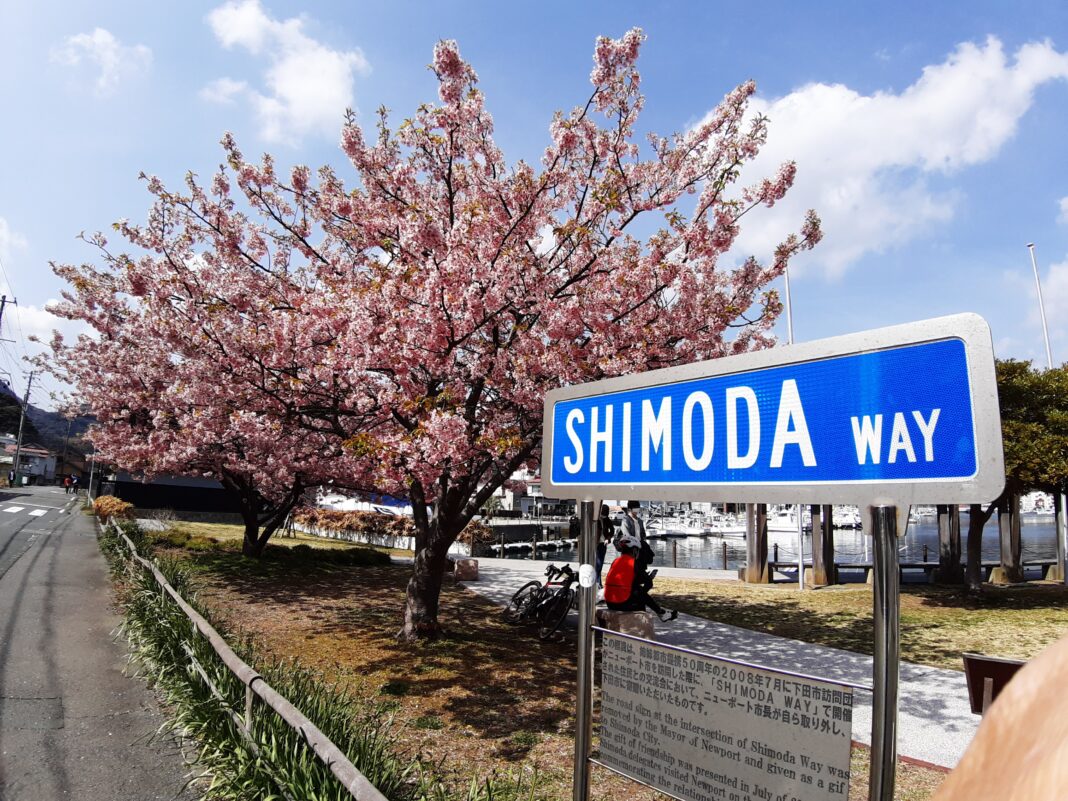As the train moves along the Izu coast – from the comfort of the warm wagon – I feel grateful for the rain. Thanks to the dramatic waves, the coastal route that connects the major onsen town of Atami to the port town of Shimoda on the southeast coast of Izu peninsula looks exceptionally atmospheric and picturesque today.
On a sunny day, Shimoda is one of Japan’s best answers to idyllic Mediterranean beach towns centered around a small and cozy port. There are many tiny yet stylish cafes ready to host its guests who had likely spent the day at one of the many beaches around the town. While the light rain today partially hides the town’s summerish vibes, it creates the perfect atmosphere to delve into the history of Shimoda that holds a very influential place in Japan`s history.
I am here today to join a walking tour of Shimoda facilitated by the Izu Peninsula Geoguide Association to introduce visitors to the history of the town that is also greatly linked to its unique geography and geology. Izu Peninsula’s geological history dates to 20 million years ago when the peninsula was formed of a group of submarine volcanoes that were located about 800-kilometers (500 miles) south of mainland Japan. The peninsula is today recognized as a “global geopark” by UNESCO, which underlines the fact that Izu Peninsula is one of the very few places where it is possible to trace the numerous and dramatic changes of volcanism for such an extended period of time. Our friendly guide Nakada-san is from Izu Peninsula Geoguide Association, a group admirably devoted to introducing many wonders of the Izu Peninsula, including unique geology, biodiversity, culture and history, to the visitors. Shimoda, like the rest of Shizuoka Prefecture, is a place with multiple layers and many wonders.
Table of Contents
Shimoda, the Town Where Japan Officially Opened Its Doors to Westerners
Our tour today mainly focuses on the sites that relate to the history of Shimoda and highlight the importance of this beautiful seaside town in terms of the relation between Japan and the western world. Shimoda is one of the places that witnessed the signing of a series of treaties between the United States of America and Japan, which ended Japan’s decades long isolationist policy that closed the country’s borders to foreign ships (except for the Chinese and Dutch).
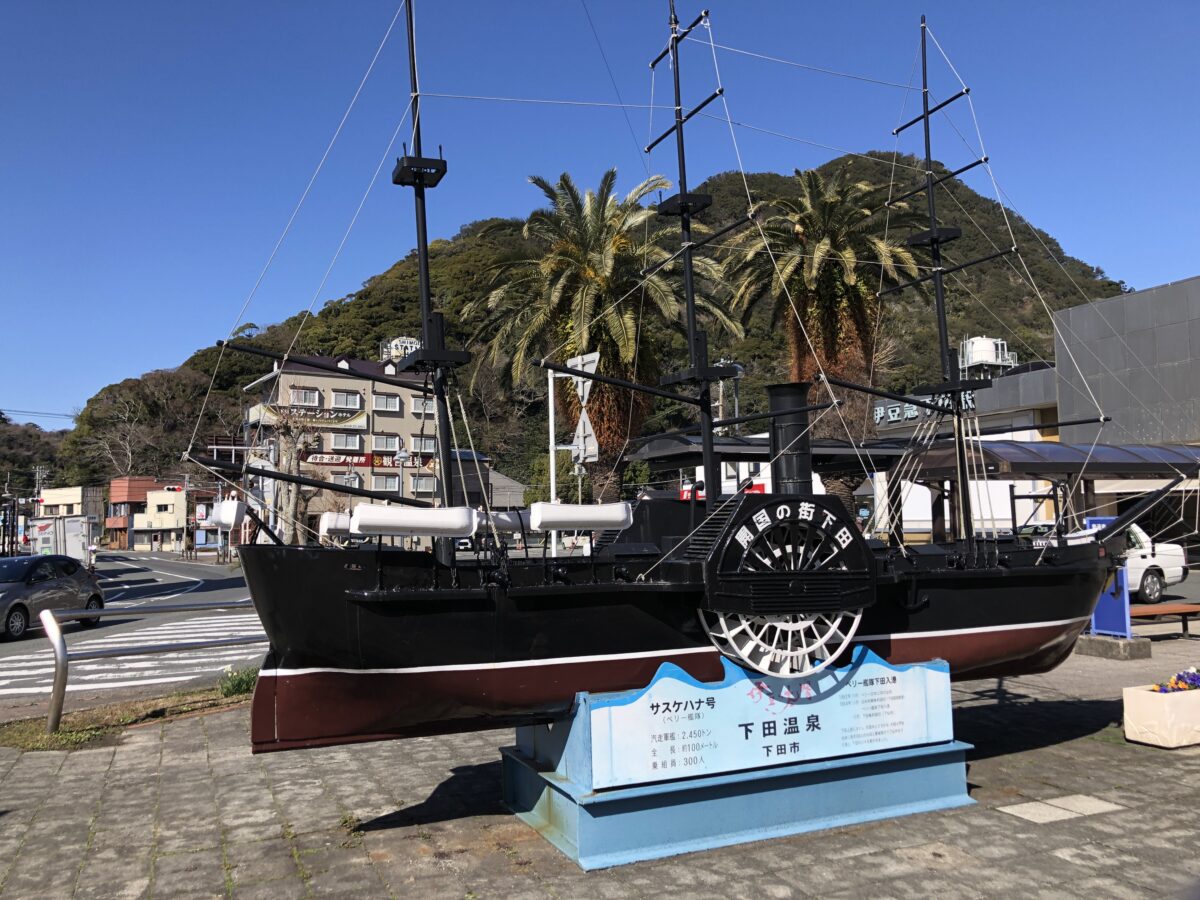
Right outside the train station, we are greeted by the small replica of what is referred to as Perry’s Black Ship. The name comes from the American commodore Matthew C. Perry who traveled with its fleet to Japan and eventually to Shimoda in 1853 to initiate the opening of Japan’s ports to US ships. This influential event, which in 1854 resulted in the signing of a treaty between Japan and the United States that legally formalized Japan`s opening of its borders to the world, is annually celebrated in May to pay tribute to the history of the town and once again recognize the importance of maintaining good relations with the outside world. The set of treaties executed following Perry`s arrival (that include both the Kanagawa Convention executed in Yokohama and the Treaty of Friendship executed in Shimoda) gave the American ships the trading rights at Shimoda and Hakodate ports, located in Hokkaido, and also enabled the opening of an American consulate in Shimoda.
Ryosen-ji Temple, a Picturesque Journey to the Days of Exploration
Shortly after, our tour takes us to the atmospheric Ryosen-ji Temple – the very same location where the Treaty of Friendship was signed between Japan and the USA in 1854.
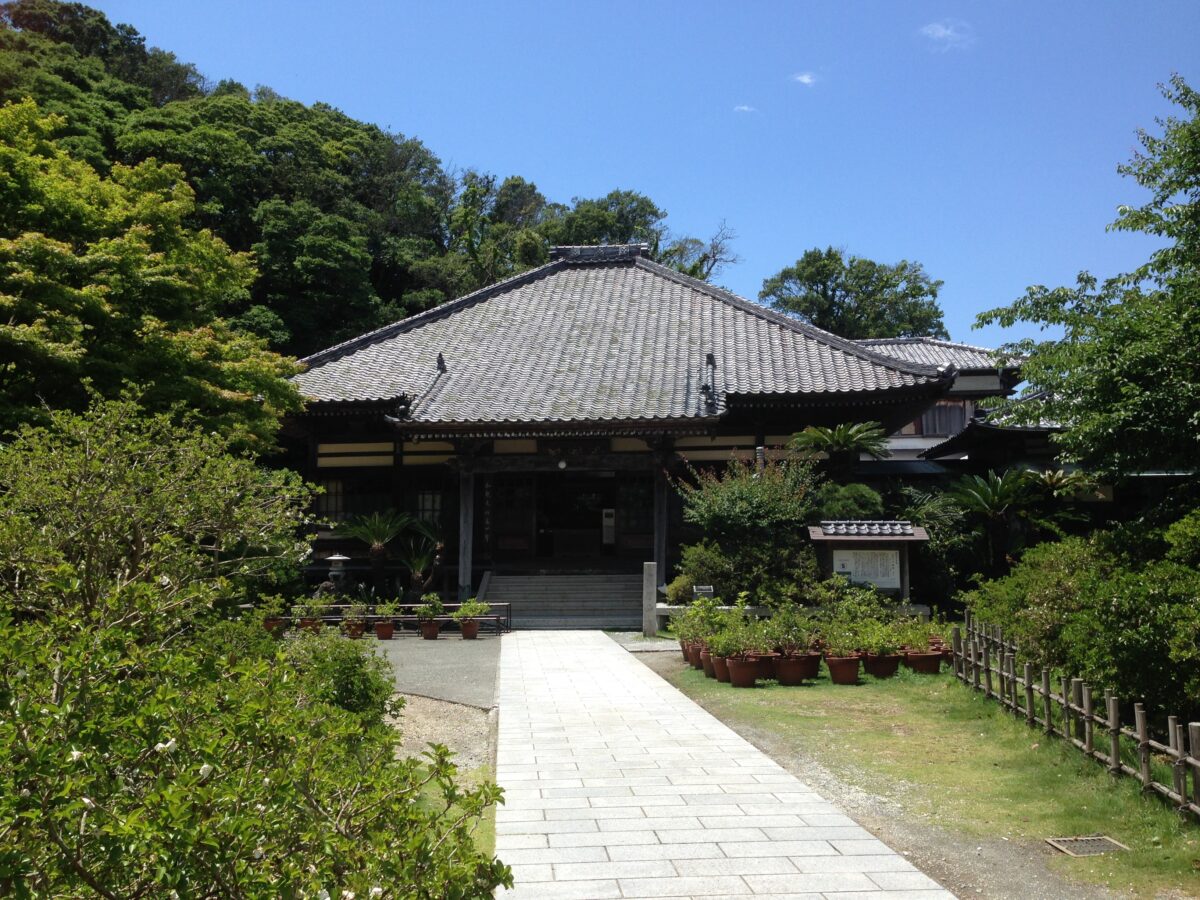
Ryosen-ji Temple feels very cozy with its many rooms and an inner garden – almost like a house, especially on this rainy day. I soon find out that the temple, established in 1635 during the reign of Tokugawa government, was originally used as a guest house for government officials.
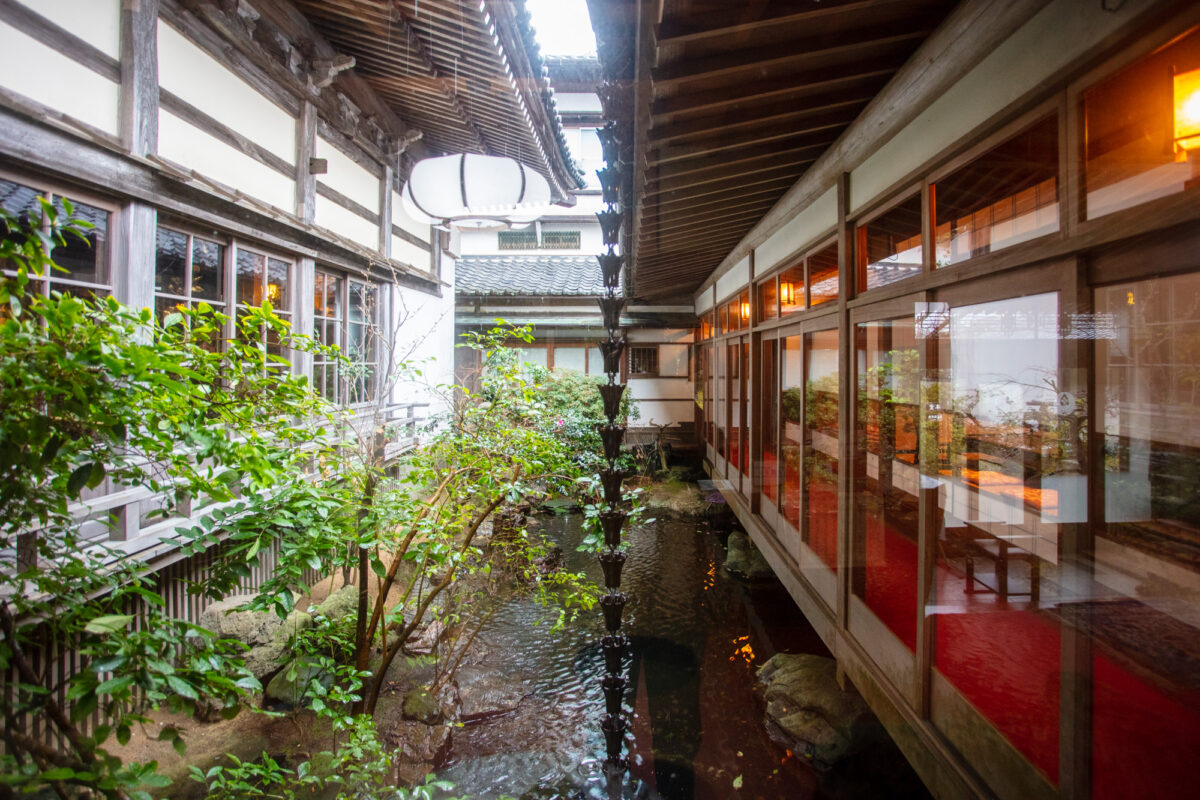
The head priest, who is fluent in English, leads us to one of the larger rooms. Following a brief introduction about the history of Ryosen-ji Temple, he introduces us to the replica of some of the original pieces from the Black Ship Collection that is in the possession of the temple. The large collection entails around 3,000 original items from a period between the 16th and 19th centuries and includes maps, drawings and various crafts. Around 30 to 40 pieces from this large collection are displayed on a rotating basis in the museum located on the temple grounds. The displays change once every four to five months.
Black Ship Collection and Museum
Some of the most interesting pieces from the collection include earlier maps of the world. We carefully review each map and notice how the accuracy of the maps improve as the years go by and navigation and mapping techniques improve. We play a little game of finding our respective countries and Japan on these earlier maps, which is a much harder task than one might imagine when judged from the perspective of the information we now have available.
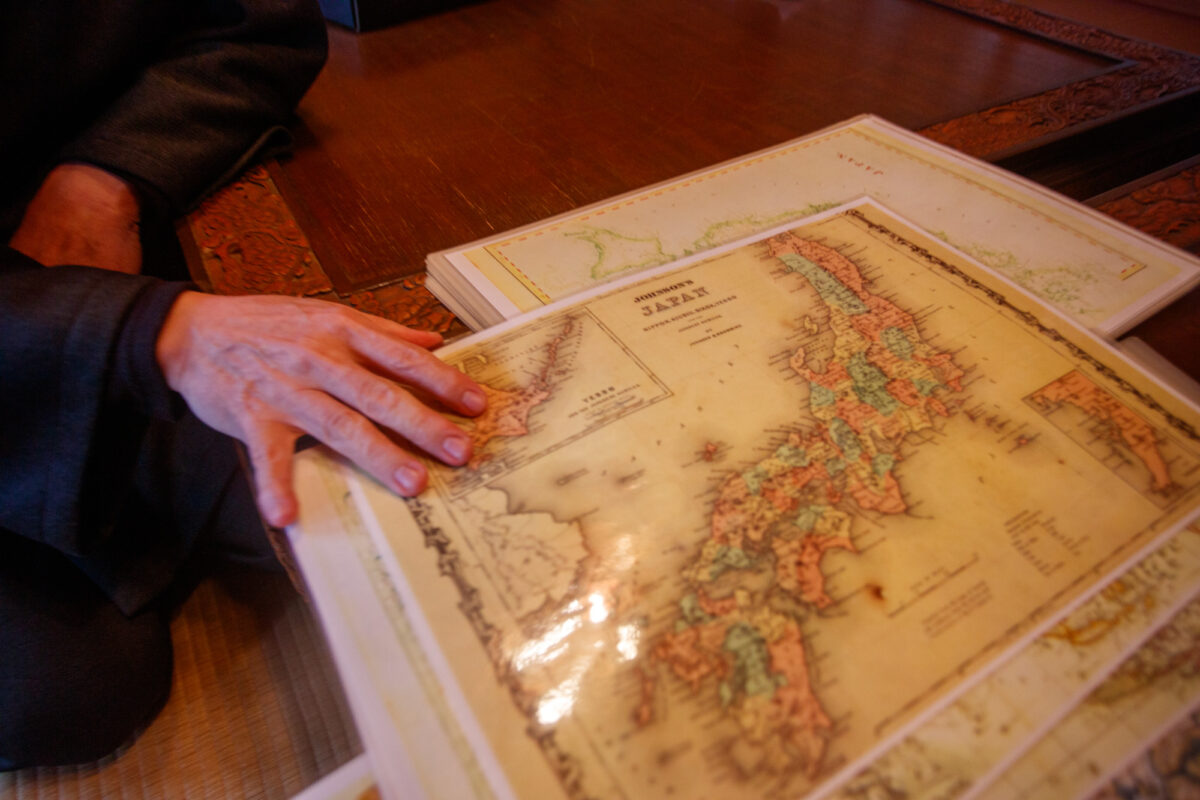
There are also many paintings and drawings that reflect the perception of the Japanese by the outside world and also the depictions of non-Japanese people by Japanese artists. I feel very fortunate to have the company of the priest – he patiently guides us through the sets of drawings and maps and explains subtle points that one may otherwise miss. The overwhelming desire to define the unknown at an age where information about the outside world was very limited and gaps had to be filled with one’s wild imagination is undeniably visible in the drawings. My time spent with the priest going over these drawings and maps reminds me that I often tend to take the information age that we live in for granted and makes me more appreciative of the efforts our ancestors had to put in to get to know the world around them in the absence of technology.
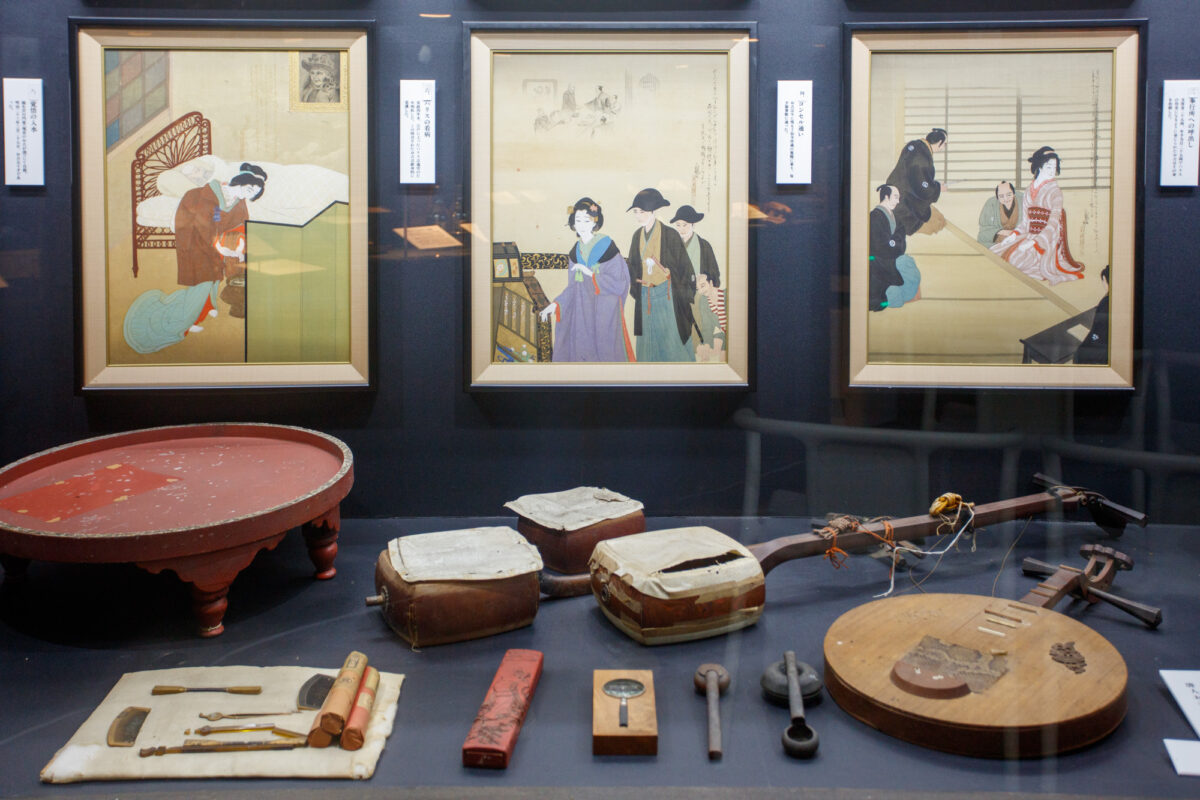
After our engaging and highly informative session with the priest, we move to the Black Ship Museum located right next to the temple, where a rotating selection of the Black Ship collection is on display. The museum is impressively modern, well maintained, and informative. In addition to a display room where select pieces from the large collection can be viewed and a tempting gift shop, there is also a movie room where visitors can watch a 15-minute video about the history of Black Ship and its overall impact on Japan in English.
Follow the Footsteps of Commodore Perry Along Perry Road
Once we leave the temple grounds, our guide leads us through picturesque Perry Road, a pedestrian street that connects Ryosen-ji Temple to the Perry Landing Monument (a bust of Perry and a plaque) positioned by the seaside that honors his arrival. This is the same road that Perry walked when he arrived at Shimoda Harbor. Divided by a canal, Perry Road carries the aura of atmospheric and narrow streets of Kyoto with a touch of the picture-perfect beauty of European towns. While it only takes 10-15 minutes to walk the entire road, one can easily spend hours along the Perry Road enjoying the cafes and shops lining the street.

The street is also home to an old warehouse built using the Izu Stone – a special type of stone formed as a result of submarine volcanic eruptions that occurred more than 10 million years ago.
Centuries Old Toden-ji Temple

Ryosen-ji Temple is not the only temple visit on our tour. The modest Toden-ji Temple, which is a 10-minute walking distance from Ryosen-ji, dates to the 15th century. The temple belongs to the Jodo-shu sect of Pure Land Buddhism. It is also a site where a moving statue was built in memory of the lives lost due to a tsunami that struck Shimoda after the Tokai earthquake in 1854.
Looking Over the Harbour from Shimoda Park
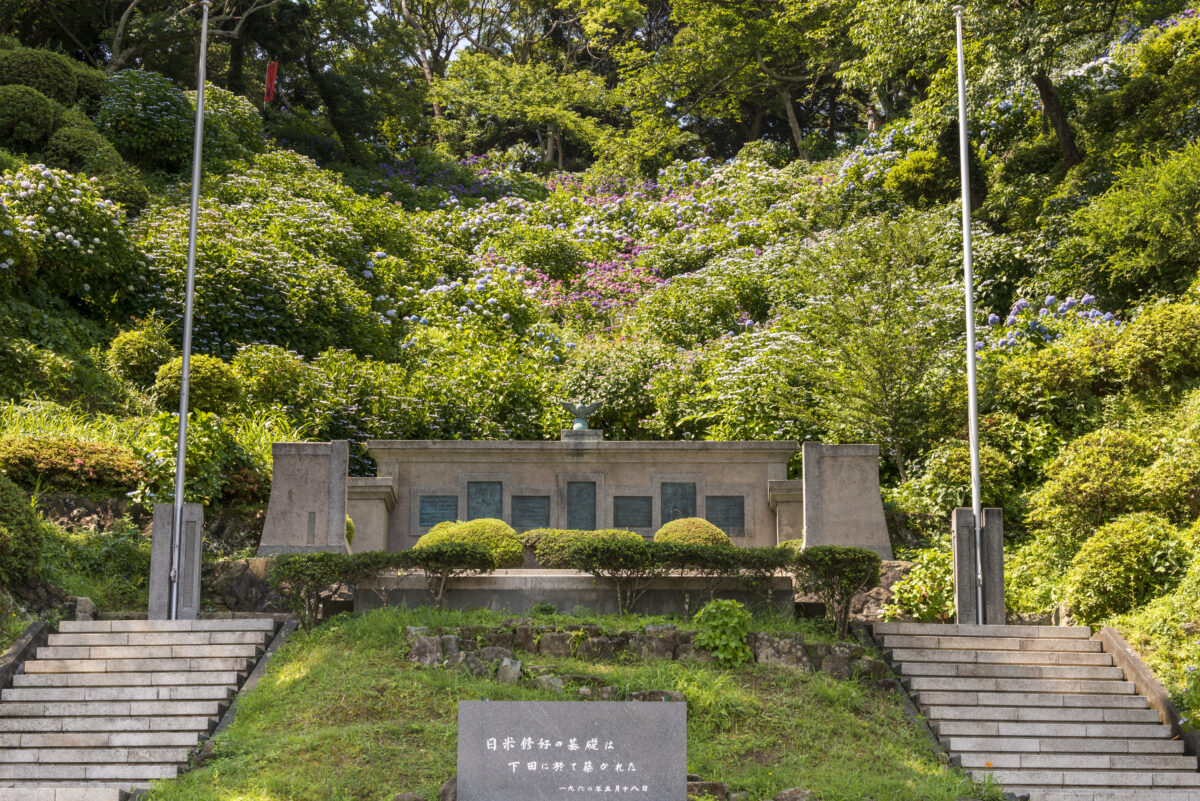
Our tour ends at Shimoda Park, which is the perfect place to wrap up the day. The park overlooks the picturesque harbor of Shimoda. Our guide notes that in June, the park becomes a colorful paradise with approximately 150,000 hydrangeas with nearly a total of 3,000,000 flowers in bloom. The colorful event is celebrated with the Hydrangea Festival held each year in June. Shimoda is a town of many different layers warranting multiple visits. I promise to come back during the hydrangea season and for a longer stay.
How to Book the Shimoda Walking Tour
The Shimoda walking tour can be booked for any day of the week with four days advance notice. The tour takes around two hours, and the meeting point is the Black Ship replica located right in front of the station. The experience is available in both English and Japanese. For pricing and reservation, please check this link. Please note that the availability of the priest at Ryosen-ji Temple may vary.
How to get to Shimoda from Tokyo
The easiest way to get to Shimoda is to Tokaido-Sanyo Shinkasen from Tokyo Station to Atami (43-minutes) and change to Ito Line (Local Izukyu-Shimoda Line) for Shimoda (1-hour 41-minutes).
